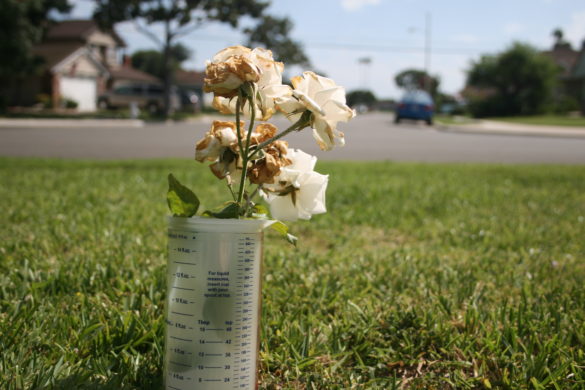
By Benjamin Minch, Staff Writer
What would happen if all the plants in the world were to die? We are on a trend towards deforestation of about 13 million hectares a year, so this question must be brought up. Fortunately, plants that perform artificial photosynthesis are being developed. But are these plants good enough to make up for the millions of hectares we have already destroyed?
Before we access artificial photosynthesis, we must first find out the catastrophic effects we would have to counter that would be caused by the removal of forests. The main role that forests and plants play in human benefit is carbon dioxide (CO2) absorption. Trees and every plant perform photosynthesis, the process of converting light energy and carbon dioxide into natural food. This process is the cause of the 8.8 billion tons of carbon dioxide that is absorbed by forests. That is about 40% of all the man-made CO2 in the atmosphere.
On top of this, forests also help cool the world by releasing water as a byproduct of photosynthesis. This cooling effect is just starting to be researched as we are on the brink of a climate change. Forests also play a key role in distributing oxygen into the atmosphere. Two trees produce enough oxygen for a person to breath for an entire year. If there were no trees altogether, we would experience more heat, less oxygen to breathe and more carbon dioxide in the atmosphere, which is a greenhouse gas that traps heat.
It is pretty obvious now that we would not survive without plants. All animals that rely on those plants would end up dead and extinct, causing a huge trophic cascade that would affect all life on earth. Artificial photosynthesizing plants could however, rather than replace real plants after they all die, complement those plants now. Before making such conclusion however, we must evaluate the effectiveness of these plants, and if they are worth the cost of developing.
The goal of artificial photosynthesis is to increase the efficiency of sunlight absorption because if you can increase efficiency, it will be a viable option for a future energy source. Currently, plants only convert about 1% of the sun’s energy into fuel. This is enough to sustain the plant, but not much else. The goal that would be needed for artificial photosynthesis to be worth the production cost would be 10% according to the researchers at Cal Tech. But first, you might want to know how this process even works.
The goal of artificial photosynthesis is to produce energy by absorbing sunlight and splitting water molecules. The splitting of water is meant to release hydrogen, which can be used as a natural form of energy. The easiest part of it is obviously the sun absorption because we have devoted many of our research abilities towards solar panels and solar technology. Creating efficient solar panels is a constantly improving science and has received a lot of government grants.
The harder part of the project though, is finding an efficient way to split water into hydrogen and oxygen. Splitting water requires about 2.5 volts of energy to start a reaction. Finding a way to efficiently turn the sunlight energy into electrical energy would be very beneficial to finally achieving sustainability in the energy field.
The scientists at Cal Tech have discovered many different catalysts that could make the energy input much less such as Cobalt oxide and manganese, but nothing is real concrete about the most efficient way to go about it. Once figured out however, it could change the course of energy usage in our world.
Current solar panels are very inefficient because they convert sunlight into direct energy, which is time-dependent and non-storable. This means that solar energy is like weather; its efficiency changes with the time of day and the energy it produces must be used right away. Artificial photosynthesis however, produces storable energy in the form of hydrogen. This is a big advantage because it would allow us to produce clean fuel without releasing greenhouse gasses into the atmosphere. This fuel can be used to power air heaters, hydrogen powered cars and many more forms of technology. On top of this, it will actually take CO2 out of the air instead of releasing it, which could reverse the trend towards more CO2 in our atmosphere. CO2 and greenhouse gases are some of the main contributors to a so called “global warming,” so the reversal of this trend could actually prevent this catastrophic event from occurring.
Once a method of efficient artificial photosynthesis becomes available, it could change the world. But until then, we will have to protect our natural forests, because they are the only hope we have of absorbing our CO2 emissions.





